A multicultural island that supported the Maritime Silk Road
2021/10/22
Penang Island, Malaysia
The island of Penang has long been one of Asia’s most important maritime centers, flourishing as a trading hub along the Strait of Malacca. The island developed as a transit point for trade between India, the Arab world and China from around the 7th century. After the Age of Discovery, the island served as a window for trade with Portugal and the Netherlands, and people from many countries came and went. In the latter half of the 18th century, the city was placed under British colonial rule. At the center of the island, George Town still retains many features of the time, and is registered as a World Heritage site along with Malacca. Let’s visit the city where various cultures coexist, including colonial architecture, Chinese temples, Peranakan architecture, Islamic mosques, Hindu temples, and Little India, and explore its charms.
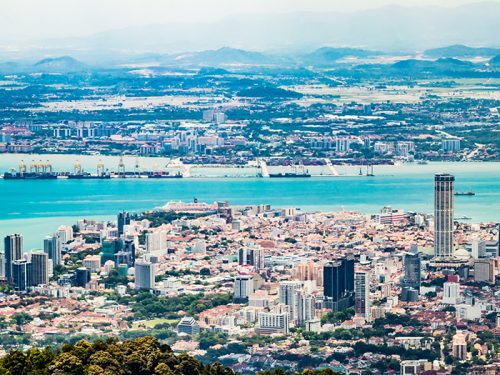
Malacca Strait, a Crossroads of Trade
The Malacca Strait is a 1,000-km-long strait between the Malay Peninsula and Sumatra Island. Since it connects the South China Sea, an adjunct of the Pacific Ocean, and the Andaman Sea, a part of the Indian Ocean, in the shortest distance, it has been a key point of the “Maritime Silk Road,” and many ships have come and gone for trade since ancient times. Today, more than 100,000 ships pass through the strait every year, making it one of the most congested sea areas in the world. Perhaps because of the narrow width of the strait, the water surface is very calm. Our ship moves slowly through the many cargo ships and tankers that come and go.

A Multicultural City
On Penang Island, our ship docks at George Town, the center of the island. The city is a mix of Chinese, Indian, and Islamic buildings, as well as those in colonial style, which tell the story of its prosperity as a major trading port. Once you step out of the port, you’re already in the middle of the city, so you can get started exploring right away.
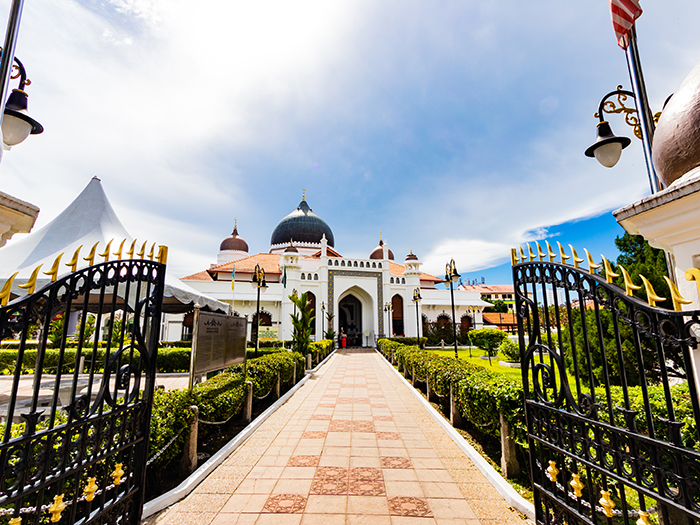
The oldest Anglican church in Malaysia, St. George’s Church, appears as you walk along Masjid Kapitan Kling Street (commonly known as Harmony Street), which runs north-south through the center of George Town. Its integrated white chalk exterior is very photogenic. The beauty of the church is enhanced by the green grass and trees and the strong sunlight of the tropical climate.
Further down the street, you will see the Kapitan Keling Mosque, built by a south Indian merchant in the early 19th century. The contrast between the black dome and white walls gives the exterior a soft and solemn appearance, and it is no wonder that this is one of the most beautiful mosques in Malaysia.
Along this street, there is also Kuan Yin or Goddess of Mercy Temple, a Chinese temple built by overseas Chinese, and the Hindu Sri Mahamariamman Temple, making it a rare area in the world where four religious facilities are gathered in one street. This coexistence of different cultures is the reason the street is called “Harmony Street”.
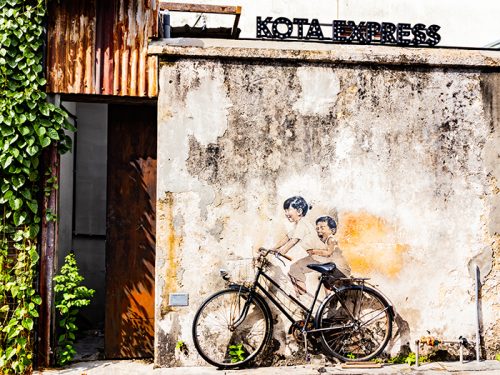
A City of Graphic Arts
Along with its diverse cultures, the many graphic arts painted in the streets of Penang attract attention in recent years. A mural painted by a Lithuanian artist became the catalyst for the spread of this art, and there are now more than 50 works of art in the city. Walking around and seeking out such art is a great way to enjoy the city. Many of the paintings on old buildings and walls depict everyday Malaysian life, such as children riding bicycles or old men in rickshaws waiting for customers, and they blend in well with the city atmosphere. Many murals are combined with actual bicycles, motorcycles, and chairs, so you can enjoy sitting on the back of the bike or in the seat and become a part of the artwork.
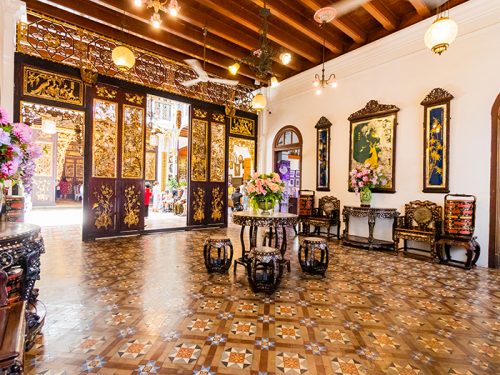
Peranakan Culture
Penang Island is also home to a strong Peranakan culture. Peranakans are the descendants of Chinese immigrants and Malays who moved to Southeast Asia. They built their wealth through trade and other businesses during the time when the British Empire ruled the Malay Peninsula. A fusion of Chinese, Malay and European cultures has become a beautiful tradition that remains to this day.
The Peranakan Mansion is a museum where you can enjoy the splendor of this culture. Inside the stately mansion built in the Peranakan style are many antiques on display, including furniture, bedding, tableware, and precious metals, allowing visitors to experience a unique world where the East and West coexist.
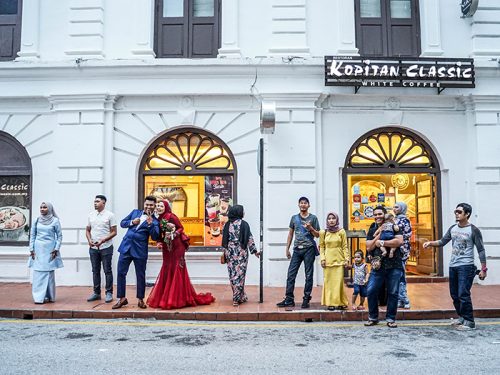
The influence of the Peranakan culture can be seen in the Nyonya cuisine, a specialty of Penang Island. Nyonya means “Peranakan women” and the cuisine is based on their home cooking. The dishes look similar to Chinese, but have a unique flavor of coconut and various spices that deliver a combination of different aromas and flavors when you take a bite.
While European, Chinese, Malay, and Indian cultures mix and coexist in the everyday life of this city, we encourntered people who are welcoming and inclusive of tourists like us who are from yet another culture.
PHOTO: PEACEBOAT, Isogai Miki, Yuruki Shiho
